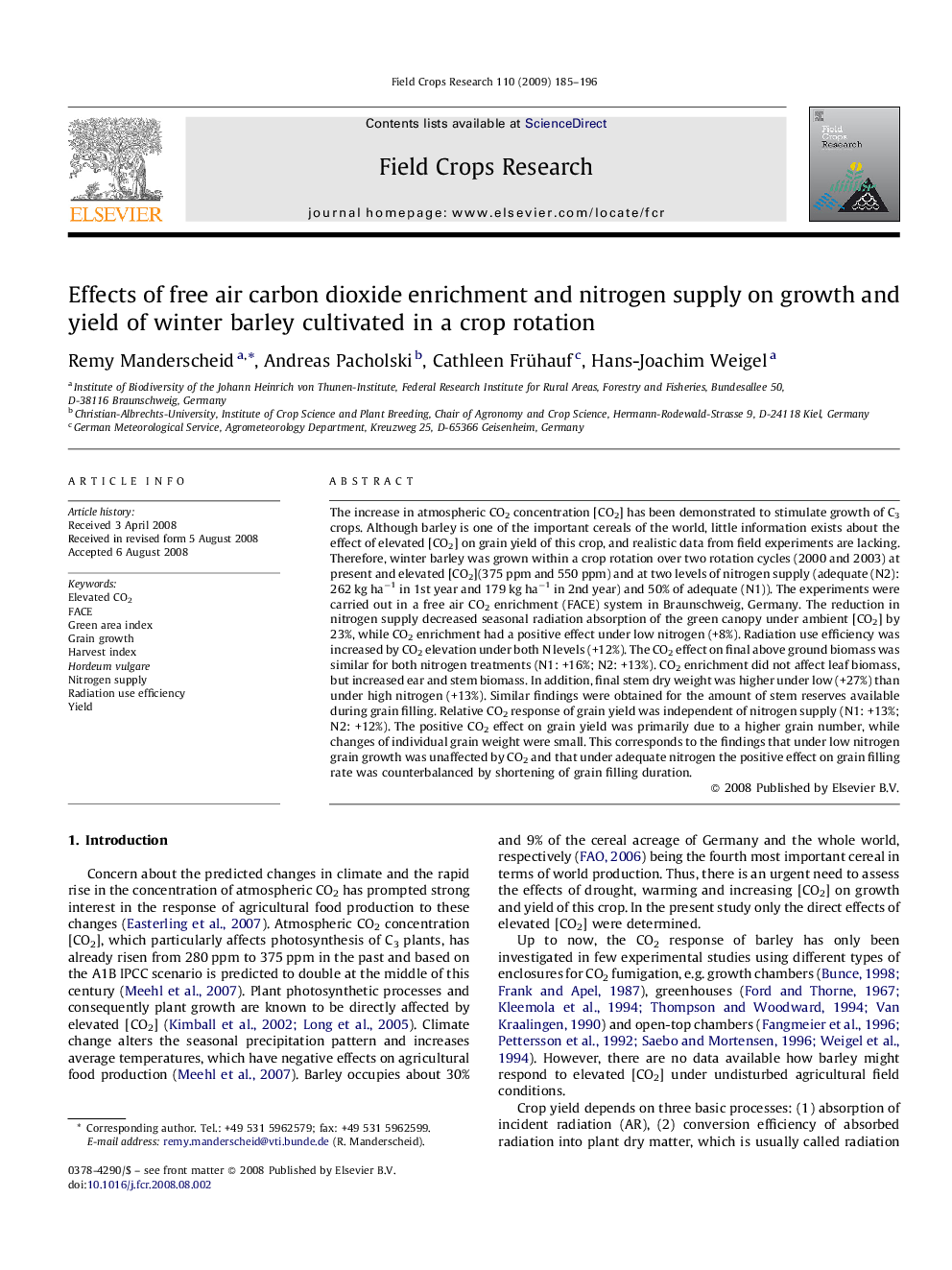| Article ID | Journal | Published Year | Pages | File Type |
|---|---|---|---|---|
| 4511262 | Field Crops Research | 2009 | 12 Pages |
The increase in atmospheric CO2 concentration [CO2] has been demonstrated to stimulate growth of C3 crops. Although barley is one of the important cereals of the world, little information exists about the effect of elevated [CO2] on grain yield of this crop, and realistic data from field experiments are lacking. Therefore, winter barley was grown within a crop rotation over two rotation cycles (2000 and 2003) at present and elevated [CO2](375 ppm and 550 ppm) and at two levels of nitrogen supply (adequate (N2): 262 kg ha−1 in 1st year and 179 kg ha−1 in 2nd year) and 50% of adequate (N1)). The experiments were carried out in a free air CO2 enrichment (FACE) system in Braunschweig, Germany. The reduction in nitrogen supply decreased seasonal radiation absorption of the green canopy under ambient [CO2] by 23%, while CO2 enrichment had a positive effect under low nitrogen (+8%). Radiation use efficiency was increased by CO2 elevation under both N levels (+12%). The CO2 effect on final above ground biomass was similar for both nitrogen treatments (N1: +16%; N2: +13%). CO2 enrichment did not affect leaf biomass, but increased ear and stem biomass. In addition, final stem dry weight was higher under low (+27%) than under high nitrogen (+13%). Similar findings were obtained for the amount of stem reserves available during grain filling. Relative CO2 response of grain yield was independent of nitrogen supply (N1: +13%; N2: +12%). The positive CO2 effect on grain yield was primarily due to a higher grain number, while changes of individual grain weight were small. This corresponds to the findings that under low nitrogen grain growth was unaffected by CO2 and that under adequate nitrogen the positive effect on grain filling rate was counterbalanced by shortening of grain filling duration.
